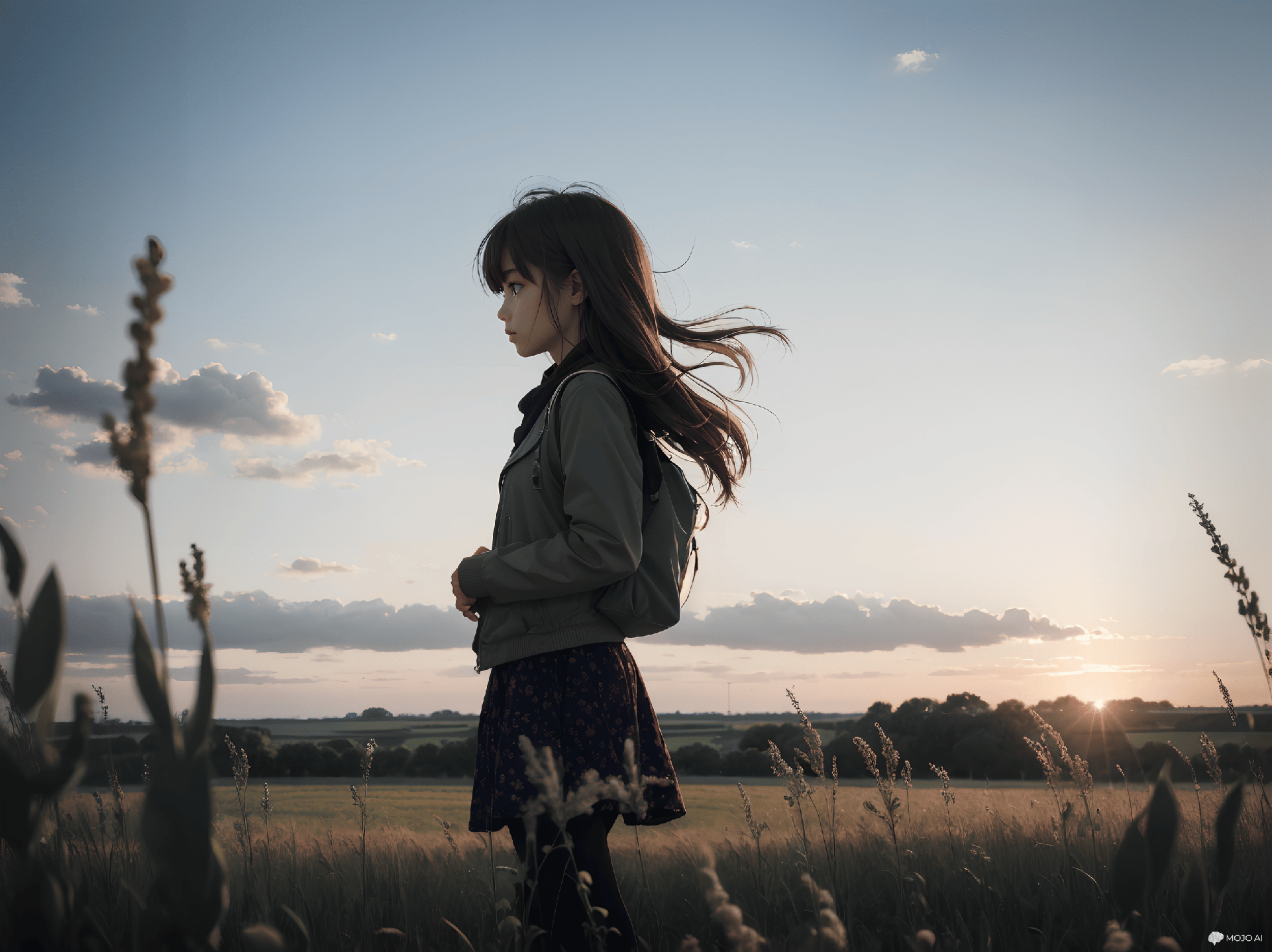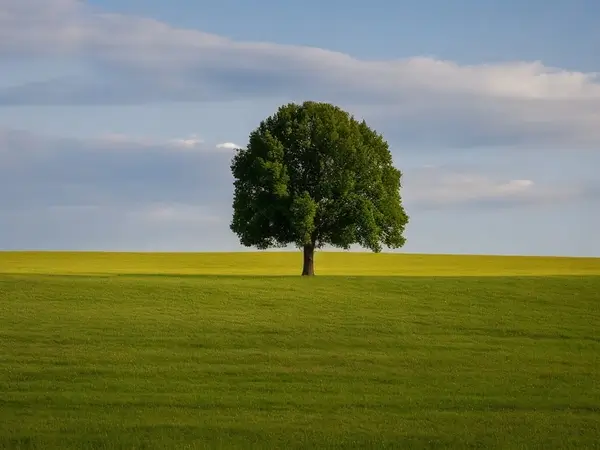We all know that the state of the art image generator transforms text into images.
For example, when given the message "red apple on a white plate", it generates a matching image.
However, it is evident that this process lacks perspective and specific details, which limits the realism and creativity in the result.

/photo A solitary girl in a field, seen from a distance, at a low angle, through a soft-focus lens —ar 4:3
But by incorporating camera prompts, we can create visually compelling and contextually rich images that more closely align with our creative vision.
In this blog post, we'll explore the process of implementing camera prompts, step by step, covering various aspects and providing examples.
What is “Camera Prompts”?
Camera prompt are nothing but simple camera-related words that we typically enter in our prompts when generating images.
In another sense, camera prompts are text inputs that simulate the perspective or viewpoint of a specific camera, including angles, lighting, and distance.
By adding them, we can create images from different angles, explore unique compositions, mimic lens effects, and even specify lighting and ambient conditions.
How to Write Best Camera Prompts
On this journey, we actually learn how camera lenses, angles, lighting, distance, and more affect AI prompts.
To understand this, I will consider a simple clue: "a lonely tree in a field". For this experiment, I'm using Mojo AI.

Now I am modifying the prompt step by step according to different aspects of the camera and watching how the result changes.
Camera Distance
By including the camera distance in the prompts, we can control how close or far the camera is to the subject.
This allows us to capture different levels of detail and highlight specific elements of the scene
So let's modify the prompt, Improved prompt: "A lone tree in a field seen from 100 meters away."

Can you see how the camera distance changes just by adding distance related words? I hope you understand what's going on.
Here are some words you can use in the camera distance prompts:
| Extreme close-up | Wide shot | Establishing |
| Close-up | Full shot | Point of view |
| Medium shot | Long shot | Two-shot |
Camera Angles
To add depth and variety to the generated images, we should experiment with different camera angles.
By adjusting the camera’s position as well as angle, we can explore unique viewpoints and create images that offer fresh and captivating perspectives.
Improved Prompt: “A solitary tree in a field, seen from a distance, at a low angle.”

If you closely look at the image, you can see in this case the angle of the camera changes and is fixed at low.
Below are the words which you can use in your camera angle prompts to enhance and specify the camera angle.
| Aerial | Dutch tilt | Overhead |
| Bird’s-eye view | High angle | Worm’s-eye view |
| Canted | Eye-level | Panoramic |
Now, let’s talk about camera lens prompts.
Applying Lens Effects
By adding camera lens prompts, we can enhance the aesthetic appeal and evoke specific moods.
So, let’s see how lens effects add artistic nuances to the generated images, providing an opportunity to explore creative possibilities.
Improved Prompt: “A solitary tree in a field, seen from a distance, at a low angle, through a soft-focus lens.”

What fun! Are you realizing how the simple word “soft focus lens” changes the image’s outlook?
Really, it’s giving me a lot of excitement. So let’s find some words that you can apply to your camera lens prompts:
| Telephoto | Fish-eye | Anamorphic |
| Prime | Zoom | Fixed focal length |
| Macro | Tilt-shift | Variable focal length |
Setting Lighting and Environmental Conditions
Do you know Specify lighting and environmental conditions can enrich the generated images?
Yes by incorporating prompts related to lighting and environmental factors, we can set the mood and atmosphere of the scene, creating a more immersive and evocative visual experience.
Improved Prompt: “A solitary tree in a field, seen from a distance, at a low angle, through a soft-focus lens, bathed in warm sunlight.”

Image 1 is generated by the mentioned prompt but image 2 is generated by “A solitary tree in a field, seen from a distance, at a low angle, bathed in Diffused sunlight.”
So, to get really effective results in lighting effect we should use the following words in lighting prompts intellectually with proper combination of other aspects:
| Low-key | Backlighting | Rembrandt |
| High-key | Soft light | Fill light |
| Natural light | Hard light | Key light |
Experimenting with Composition
Camera prompts offer opportunities to experiment with different compositions, allowing us to create visually striking images.
Now we explore the arrangement of elements within the scene and create images that are visually captivating and aesthetically pleasing.
Final Prompt: “A solitary tree in a vast field, seen from a distance, at a low angle, through a soft-focus lens, bathed in warm sunlight, with the branches reaching towards the horizon.”

If you compare the image with others you can see that the direction of the branches changes as stated in the prompt.
10 Best Camera Prompts
So as we learn how various aspects of the camera affect prompts, now let’s see some examples just to kick-start your journey.
1. A bustling city street, captured from a high vantage point, showcasing the energetic flow of people and vehicles.
2. A majestic mountain range, seen from a distance with a wide-angle lens, capturing the grandeur and vastness of the landscape.
3. A serene beach at sunset, viewed from a low angle, capturing the warm golden hues and the waves gently lapping the shore.
4. A cozy café interior, shot from a corner table, with a soft-focus lens creating a warm and inviting atmosphere.
5. A dense forest, photographed through the trees with a narrow depth of field, highlighting the play of light and shadows.
6. A close-up of a vibrant flower, captured with a macro lens, revealing intricate details and the delicate texture of the petals.
7. A bustling marketplace, viewed from an overhead perspective, showcasing the colorful stalls, diverse products, and lively interactions.
8. A vast desert landscape, seen from a high-angle perspective, capturing the vast expanse of sand dunes stretching into the distance.
9. A nighttime cityscape, photographed with long-exposure, capturing streaks of light from passing cars and creating a sense of movement.
10. An architectural marvel, captured from a low angle with a wide-angle lens, accentuating the unique lines and curves of the structure, and adding a dramatic perspective.
Conclusion:
So, you can see by incorporating camera angles, distance, and lighting in prompts, we can infuse our creative vision, resulting in more personalized and contextually rich outputs.
And we can say the iterative process of refining camera prompts allows us to fine-tune the desired effects, producing images that align with our imagination and storytelling goals.
So go ahead, explore the possibilities of camera prompts, and unleash your creativity.